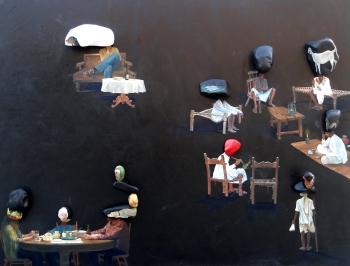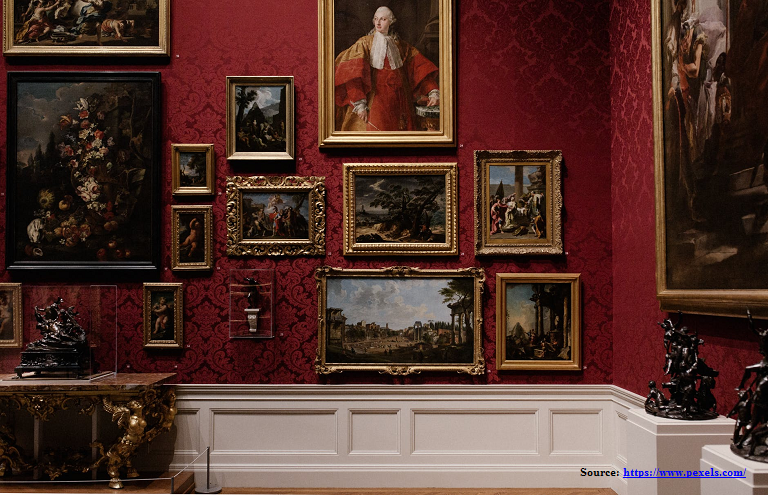
Undoubtedly, art has been the strongest means of expression since the evolution of mankind. Everyone is familiar with the cave paintings representing some of humanity's oldest stories but what about other paintings? The truth is, thousands of examples of paintings have been found across the world — dating back to thousands of years, these stunning works such as Egyptian, Indian art feature the culture and beliefs (often religious) of the age and civilizations they belong to.
So, let’s go back as far as we can and explore some of the world’s oldest paintings:
1. The Painted Roof of the Sittanavasal Cave
Creation: 600 – 700 AD
Civilization: Indian
Subject: Humans, animals
Materials: Plaster and paint
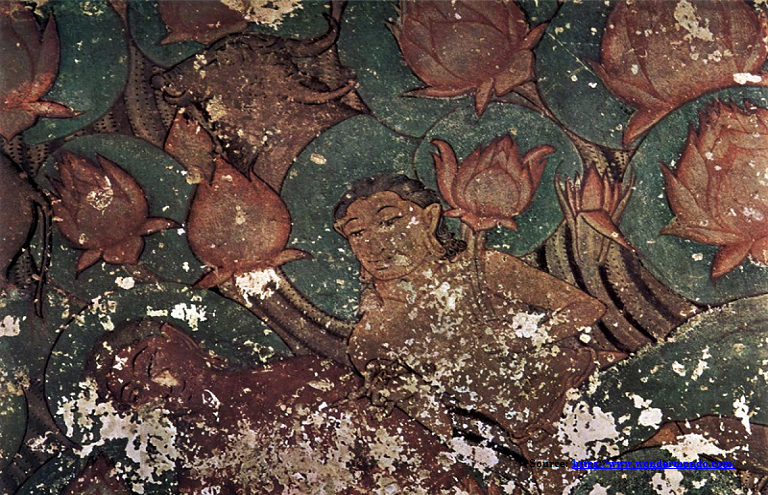
The oldest paintings of India were found adorning the walls and ceiling of the Sittanavasal Cave in Tamil Nadu. This is the oldest known attempt to decorate an indoor area. The stunning works of Indian art were created with plaster, and then painted in hues of black, green, yellow, orange, blue, and white was applied on top of it.
Originally created in the 1st century BCE, another artist drew over the originals later on. Though closely associated with Jain religion, these paintings don’t feature any religious iconography but contain human figures (dancers, singers), fish, elephants, birds, and floral patterns.
As these frescoes were vandalized, they are in pretty bad shape, barely visible and even somewhat insignificant.
2. The Painted Tomb at Hierakonpolis
Creation: 3500 BCE
Civilization: Egyptian
Subject: Humans, animals, boats, war
Materials: Plaster and paint
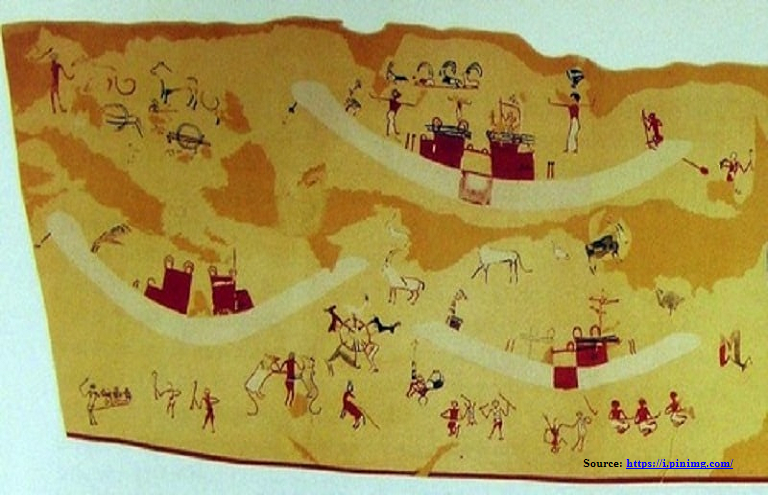
The Ancient Egyptians are popular for their adroit works of art, especially those artistic depictions that adorn the walls of tombs, often featuring the happy scenes of the person buried passing into the afterlife with an aim to help the person make an easy transition into their life after death.
This oldest Egyptian painting (image above) comes from the famous tomb at Hierakonpolis and dates to the very beginning of Egyptian civilization — to the predynastic period of Egyptian history, before the unification of Egypt in 3100 BC by King Narmer (Hierakonpolis was his capital city). The tomb is almost 1,000 years older than the Great Pyramid.
It is believed that this painting was done over time, with some elements created at one point in time and then worked upon by other painters. With many things going on in the painting, it seems quite jumbled and chaotic — hunting scenes interspersed with imagery of battlefields, along with a random series of vignettes portraying priests, dancing women, animal sacrifice, funerary rites, furniture and more. Hence, it is most often described as a ‘catalog of themes and motifs’, portraying a variety of unrelated images without any coherent meaning.
For more than a century, art scholars have tried to interpret the meaning of this painting but none have given it any official explanation. However, some historians believe that this art could be showing the arrival of Asians into the Egyptian land and how the two cultures achieved peace over time.
Today, the fragments of this painting are preserved in the well-known Egyptian Museum in Cairo.
3. The Lindisfarne Gospels
Creation: 700 AD
Civilization: British
Subject: Religion
Materials: Vellum and pigment
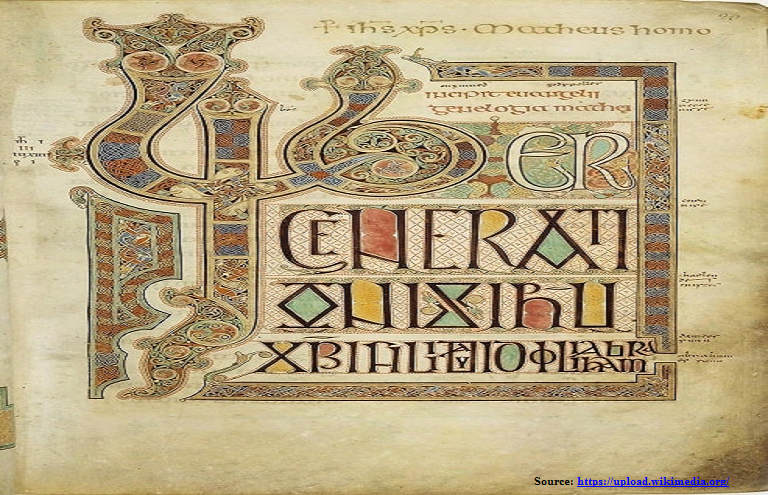
When considering British art, the first prominent paintings found were in the form of manuscripts. Most of these were religious in nature, one of the oldest and finest books is ‘the Lindisfarne Gospels.’ (image above)
Acclaimed as the most spectacular manuscript (probably produced around the years 715-720 in the monastery at Lindisfarne), to survive from Anglo-Saxon England, it is a copy of the four gospels written in insular script — the biblical sacred books recounting the life of Christ, along with the associated texts that, including the letters written by St Jeromehis, also combining Mediterranean, Anglo-Saxon and Celtic elements. Created on vellum, it is done mostly in the hues black/brown, however, shades of red, yellow, green, and blue were also used, and made organically from egg white and lapis lazuli.
More than 1300 years old, the paintings contained within this illuminated gospel book are in remarkable condition and preserved in the British library.
4. Painting from The Takamatsuzuka Tomb
Creation: 600 – 700 AD
Civilization: Japanese
Subject: Courtiers ( Asuka Bijin)
Materials: Clay and sand fresco with coloured foil
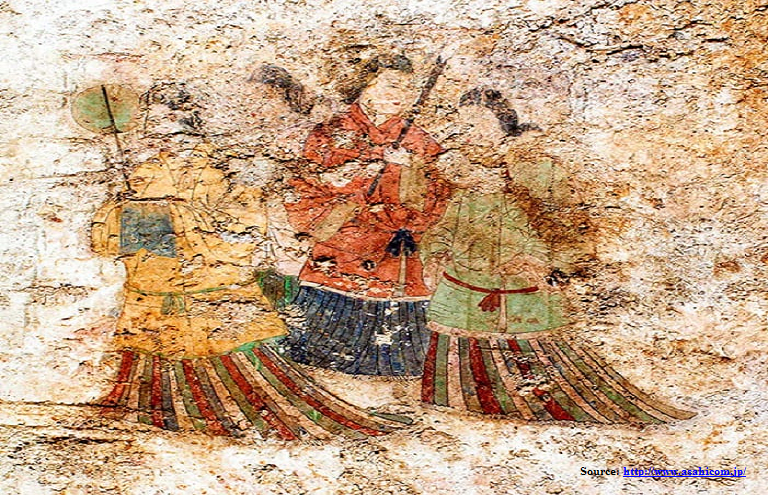
There are certainly older examples of mesmerizing Japanese art, but this painting, from the Takamatsuzuka Tomb in Asuka village, is a beautiful example of one of the oldest known Japanese paintings to date. Believed to have been done at some time between the end of the 7th century and the beginning of the 8th century, these paintings were accidentally discovered by a local farmer in the 1960s.
Meaning ‘Tall Pine Tree Ancient Burial Mound’, it is an ancient circular tomb comprising many frescos, one of the most famous is the ‘Asuka Bijin.’ This painting features several beautiful women, or courtiers, dressed in Goguryeo-style clothing of Korea. Done in the colors of red, gold, silver, and blue foil, it also features four men, as well as several animals including the white tiger, azure dragon, and black tortoise.
Considered a National Treasure of Japan, the Cultural Affairs Agency of the country is undertaking tasks to preserve this artwork.
5. Wall in the House of Sallust
Creation: 400 to 100 BCE
Civilization: Roman
Subject: None
Materials: Stucco and paint
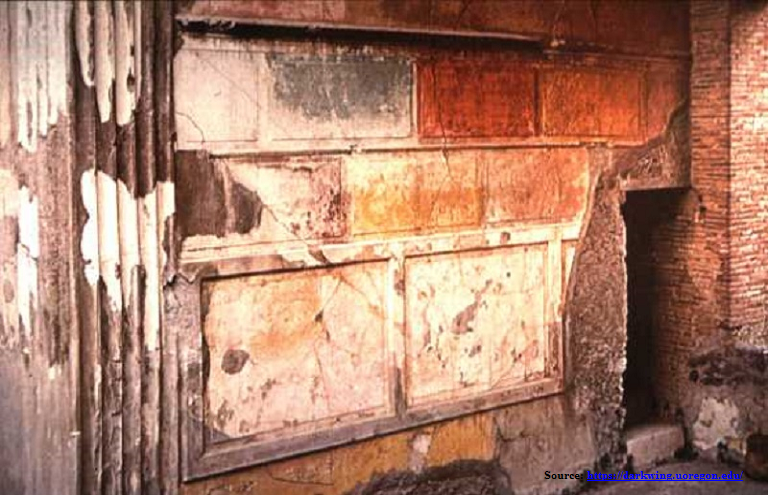
Romans were not actually well-known for their paintings but for their atypical architecture. Now, that does not mean there were no Roman paintings out there, but when it comes to exploring Roman art, architecture is the king.
Many works of art were damaged during the eruption of Mount Vesuvius near the Roman city of Pompeii which was a huge center for art and culture. The paintings that did survive the test of times are simple and decorative, one of which is one the wall of the House of Sallust, a domus (elite residence) in the ancient city of Pompeii. The paint was applied on the walls to give it a marble-like appearance, and create an illusion that the walls were raised.
6. Dancing Woman from Knossos
Creation: 1600 BCE
Civilization: Greek
Subject: Dancing woman
Materials: Pottery and paint
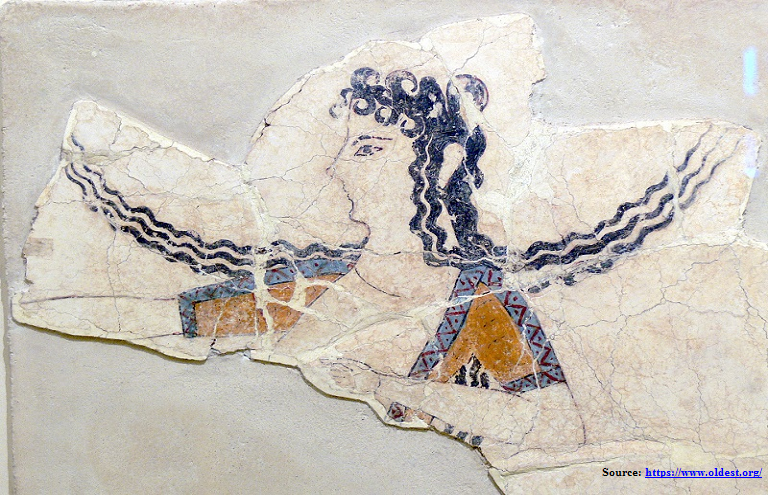
The earliest Greek painting comes from the Minoans, who flourished in the Middle Bronze Age on the island of Crete and were well known for their pottery skills and works of painted pottery. This painting ‘ Dancing woman from Knossos’ (image above) dates back to about 1600 BCE.
It depicts a woman dressed in traditional Minoan garb, with her hair done in the typical Minoan style. Her skin is white, which is in imitation of the ancient Egyptian colour convention (women painted white while men in browns). There is not much known about this woman represented in this painting, also no details about the artist are not known.
7. Silk Painting Depicting a Man Riding a Dragon
Creation: 475-221 BCE
Civilization: Chinese
Subject: Man with a Sword Riding a Dragon
Materials: Silk
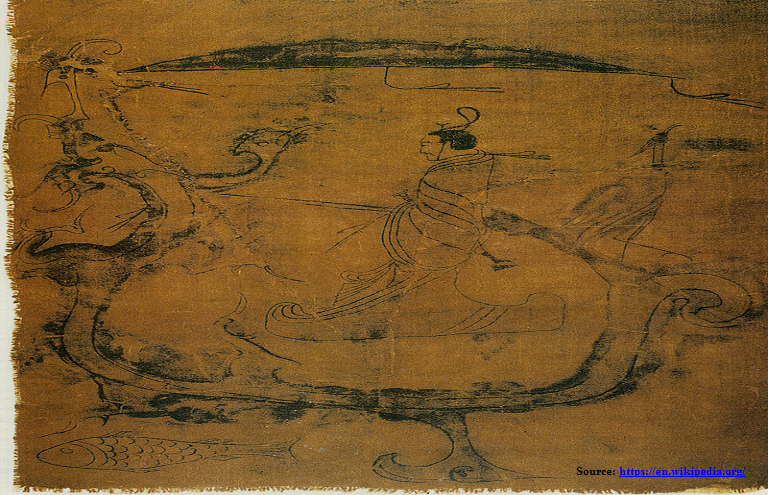
The first examples of Chinese art depicted Chinese characters as an art form, these illustrations of calligraphy were produced over centuries. However, the first paintings featuring other subjects were mostly humans and animals, such as this painting portraying a man with a dragon. This is one of the oldest examples of both Chinese art and silk painting from the Warring States period (475-221 BC). The subject of this painting is a man draped in traditional attire holding a sword and riding a dragon. There is also a white small bird called egret, and a freshwater carp in the painting, common themes in Asian art.
Discovered in the Zidanku Tomb no. 1 in Changsha, Hunan Province in 1973, it is now placed at the Hunan Museum and is one of the Chinese cultural relics which is forbidden to be exhibited abroad.
8. Tomb of the Roaring Lions
Creation: 690 BCE
Civilization: Etruscan
Subject: Animals in a row
Materials: Fresco

Located in the ancient city of Veii in Italy, the Tomb of the Roaring Lions is the oldest Etruscan tomb ever found. Dating back to around 690 BCE, the tomb is believed to be the place owned by a warrior prince, however, the presence of glass bead necklaces in the tomb suggested the presence of a female occupant too.
Located on the rear wall of the famous tomb, this painting features four feline shapes somewhat similar to animals. Many have hypothesised them to be lions while some believe that they are actually deer or horses.
It was only discovered recently in 2006 when a tombarolo (illegal excavator) propositioned an Italian court, revealed its location for leniency during his sentencing. Other significant artefacts found in the tomb include a sword, urns, Greek vases, a chariot, metal meat roasting spits, decorated vases. The paintings are red and black in colour, and some historians believe that this is the oldest painting in the painting that doesn’t fall into the category of cave painting.














